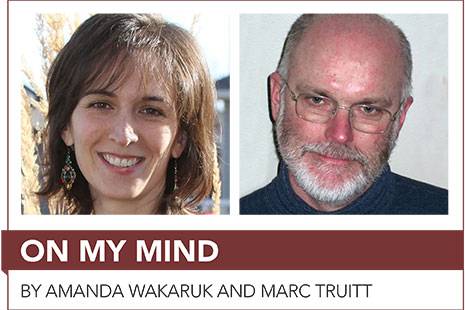
The physical library was once a place of refuge, an escape from distraction. But today, the constant need to connect and communicate has largely rendered this role obsolete. The power of coupling networking tools with instant access to vast amounts of information is now an essential feature of library programs, services, and facilities. A library without internet and Wi-Fi access is, thankfully, an anomaly.
The traditional role of the library as a physical place where individuals find information has been largely supplanted by its function as a space where information can be interrogated in a communal environment. This is also a good thing. However, as more people use the library as a social third place (after home and work), the reality of the library as a place of intellectual refuge sadly resonates with fewer users.
In addition to being regarded as technology hubs for the public, should libraries reclaim their reputation for solitude by offering communication-free zones where people can easily engage in private, focused reading and reflection?
True, reading rooms are often quiet, but even in these spaces the average library user’s focus is punctuated by the clatter of keystrokes, visual email alerts, and the vibrations of smartphones. The effects of these constant digital distractions—variously labeled as cognition overload, online compulsive disorder, data smog, and popcorn brain—have been documented and discussed by psychologists, neuroscientists, and sociologists.¹
A growing awareness of the negative effects of digital overload (and withdrawal from it, as documented by a 2010 study conducted by the University of Maryland’s International Center for Media and the Public Agenda) has led some institutions to offer physical escape from instant-communications technology. For example, in 2009 Stephens College reintroduced a secular form of vespers that requires students to drop their cellphones at the door. In countless other institutions, professors ask students to turn off communication devices when they enter the classroom. Should libraries consider something similar?
Disconnecting, as it turns out, isn’t easy to do. We are constantly surrounded with connective devices, both our own and those belonging to people around us. Even if we can will ourselves to unplug, how do we ask the same of family, friends, or the person sitting next to us on the bus?
Libraries have a long history of utilizing differentiated spaces in their public areas, so it shouldn’t be that much of a stretch for them to incorporate areas free of digital chatter. In Hamlet’s Blackberry: A Practical Philosophy for Building a Good Life in the Digital Age (Harper, 2010), William Powers advocates for “Walden zones” in the home—disconnected spaces inspired by Thoreau’s experiment to withdraw from society while remaining within it. We suggest that this idea would be a perfectly natural one for libraries. These safe harbors would be free of the external distractions of computers, cellphones, and social networking tools, allowing sustained focus and contemplation.
Of course, barring construction of a Faraday cage, there is no way to control patrons’ use of digital communication tools. If users refuse to turn off their gadgets, the spirit of the Walden zone will fail to materialize. The million-dollar question is, of course, will library users welcome a zone of inwardness—a place to read, reflect, and possibly find meaning? (Some studies indicate that it might.) Or will the shock of self-reliant thought prove overwhelming, even for short periods of time?
AMANDA WAKARUK is government information librarian and MARC TRUITT is associate university librarian for bibliographic and information services at the University of Alberta Libraries in Edmonton.
¹ There are many people writing about this issue in both academic and popular literature, including: The Shallows: What the Internet Is Doing to Our Brains by Nicholas Carr (New York: W. W. Norton & Company, 2010); Alone Together: Why We Expect More from Technology and Less from Each Other by Sherry Turkle (New York: Basic Books, 2011); Virtually You: The Dangerous Powers of the e-Personality by Elias Aboujaoude (New York: W. W. Norton, 2011); You Are Not a Gadget: A Manifesto by Jaron Lanier (New York: Alfred A. Knopf, 2010); and The Tyranny of E-Mail: The Four-Thousand-Year Journey to Your Inbox by John Freeman (New York: Scribner, 2009).

